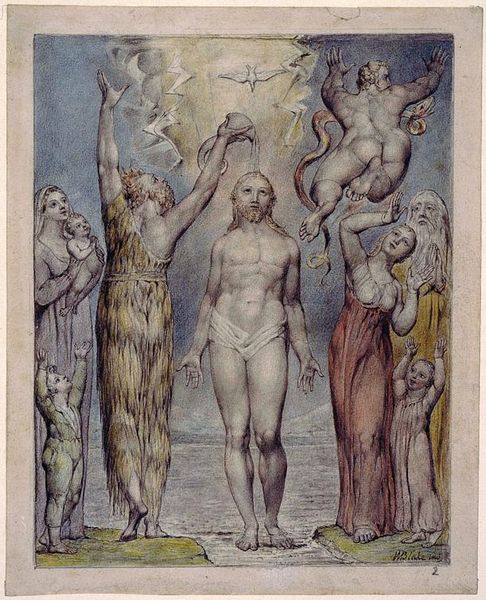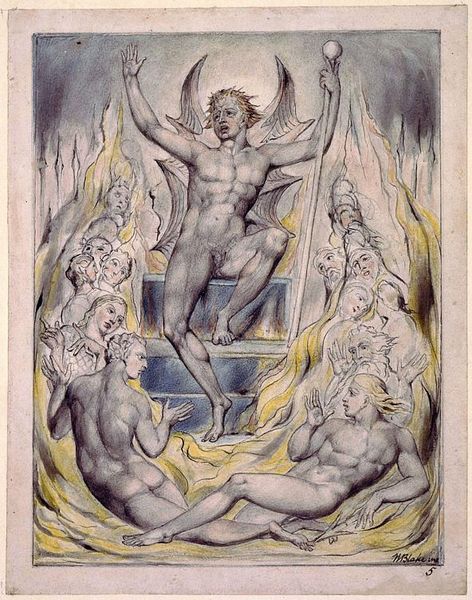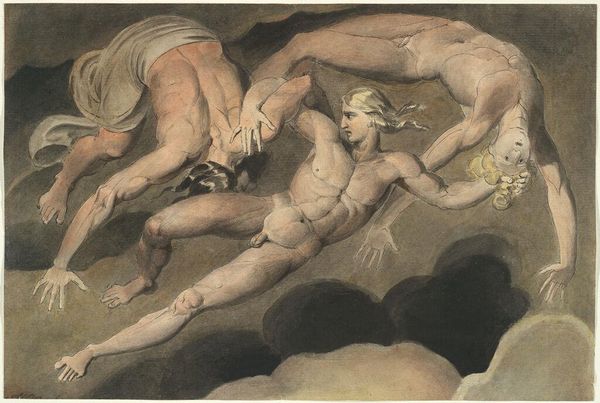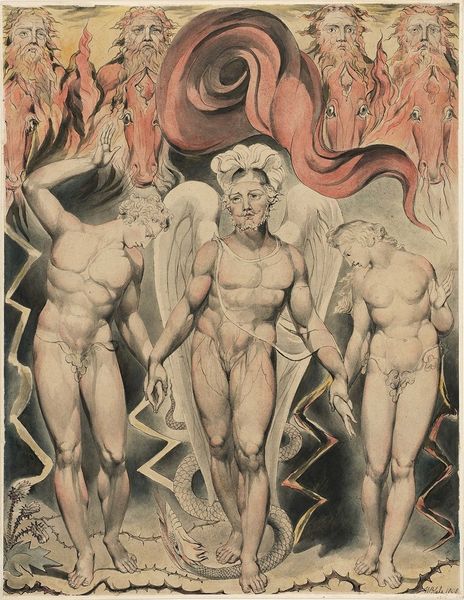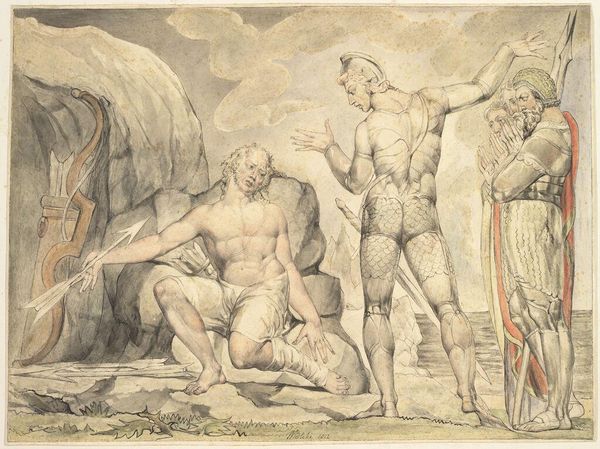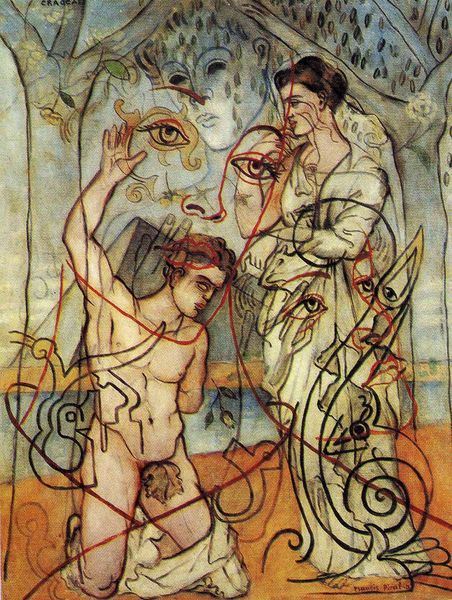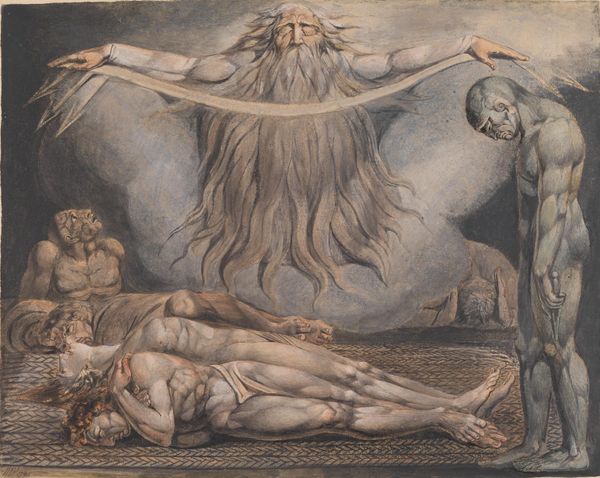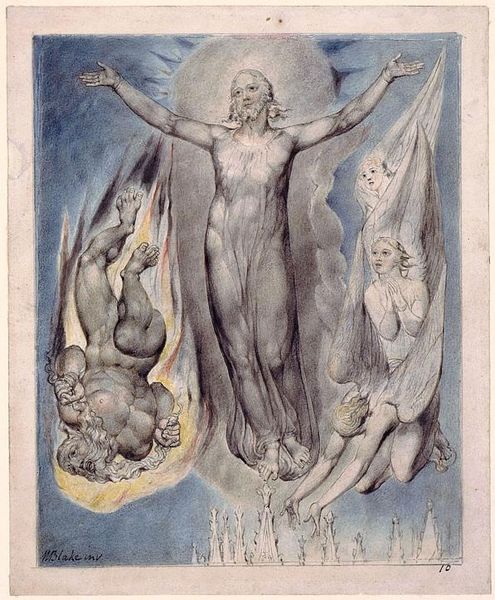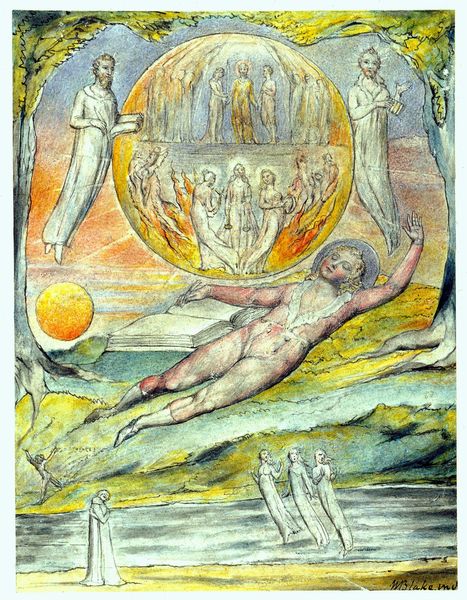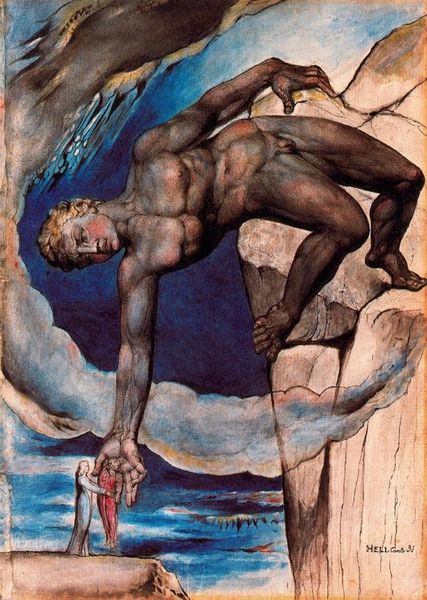
Dimensions: 222 x 146 cm
Copyright: Public domain
Editor: So, here we have William Blake’s watercolor and ink drawing "Los" from around 1820. The figures feel very muscular and almost sculptural in a way, despite the medium being so delicate. It looks like some kind of industrial creation scene. What strikes you about it? Curator: Well, right away I'm drawn to the materials. Blake’s combination of watercolor and ink – materials traditionally associated with reproduction, like printmaking, is significant. He's elevating them here, using them to depict this epic, allegorical scene, almost mocking the distinction between craft and high art. Notice how the tools themselves become symbolic – the hammer, the compass. How might those tools relate to labor in Blake’s time? Editor: It's true, those tools point directly to the labor, the making of something… a physical process. You're thinking about the Industrial Revolution, right? Curator: Exactly. Blake was deeply critical of industrialization's impact on human creativity and spiritual life. "Los" is the embodiment of the artistic imagination, struggling against Urizen, who represents reason and law. This drawing underscores the idea that even imagination requires labor. Consider the intense physical forms Blake renders. Does this make you question any assumptions about the nature of artistic labor itself? Editor: I never really thought about imagination requiring physical labor. We're so used to romanticizing inspiration. Curator: Precisely! Blake's work forces us to confront the often-overlooked materiality of artistic creation. We see not just the beautiful end product, but a trace of the maker's hand, the exertion, even the socio-economic conditions embedded within those simple ink and watercolor strokes. And this challenges that conventional split between intellectual and manual labor. Editor: This has definitely opened my eyes to how we understand artistic production. I'm going to look at art making in an entirely different way from now on! Curator: That’s the point, isn’t it? To start asking new questions about familiar forms and processes, always considering material conditions in art!
Comments
No comments
Be the first to comment and join the conversation on the ultimate creative platform.
